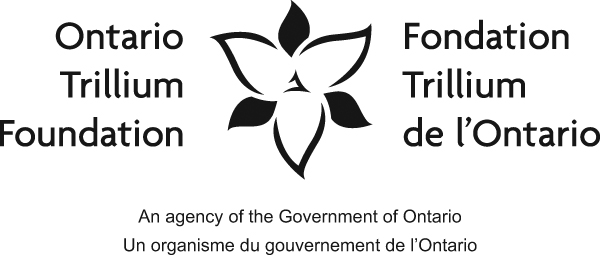Palimpsest of Faded Texts by Susan Campbell, Artist in Residence, June 2021
How we talk to one another through messages, notes, posters, and official signs can be mapped from our environment. During the residency the community collected various kinds of signs and symbols found throughout Port Hope: sprayed onto sidewalks, painted onto walls, attached to window panes, stapled onto hydro poles. Together they form a palimpsest of what we value and preserve.
Palimpsest describes the additive process which produces a textual surface where layers of meaning are brought together to represent the social, cultural, and economic activities found in Port Hope, Ontario. Each boulder in the fountain becomes an individual canvas, upon which found letterforms and inscriptions are wheat pasted, creating a community-driven palimpsest.
This collaborative artwork considers whose voice counts. Who is talking to us? Is it a person, community, corporation or institution? How are they talking to us? Is it a declaration of love, a message for humankind, an order, or a social cue? Perhaps it’s more a signature, a commemoration, a property marker, or an encrypted code? These voices from Port Hope’s typographical environment are physically mapped here.

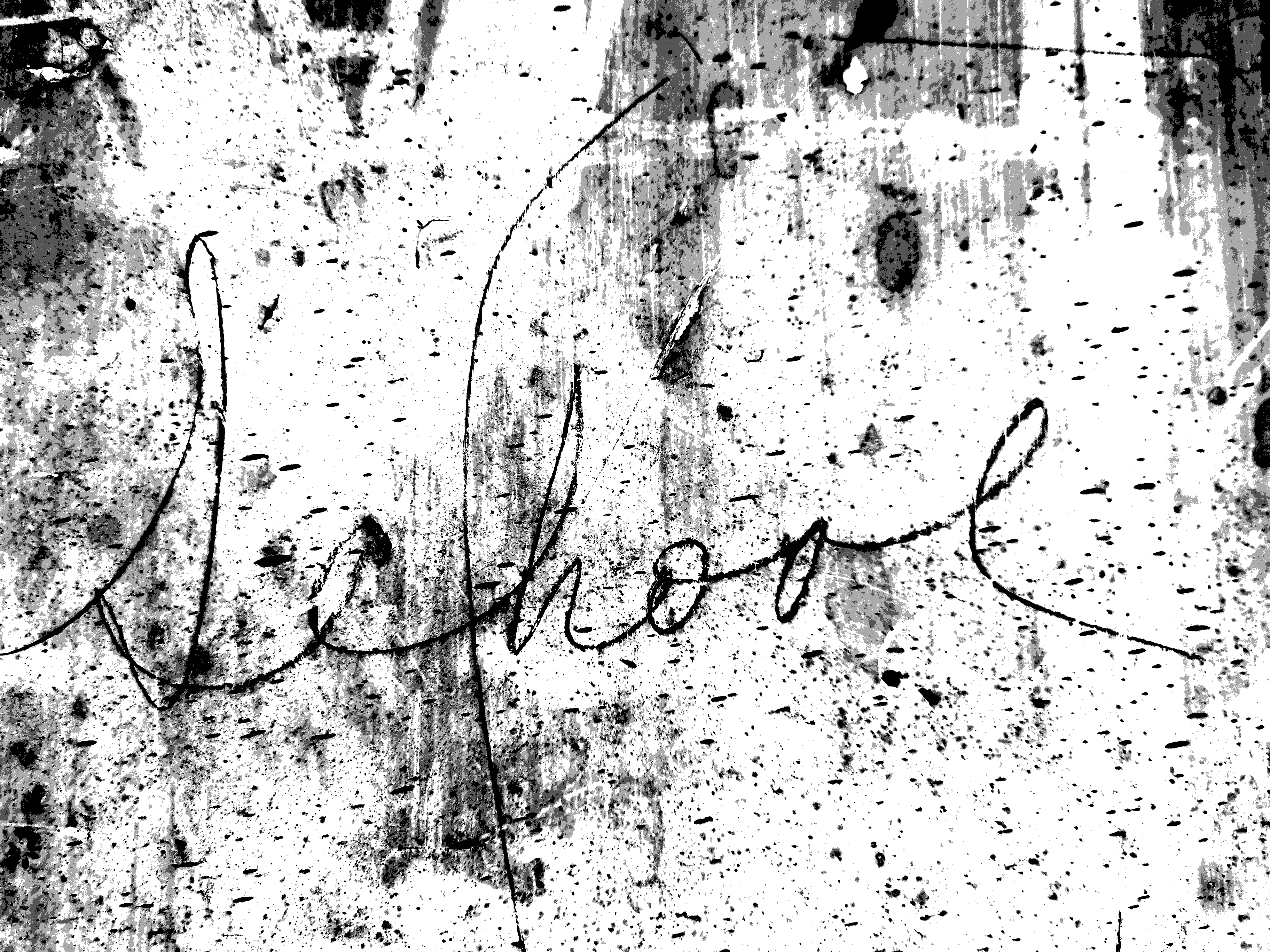
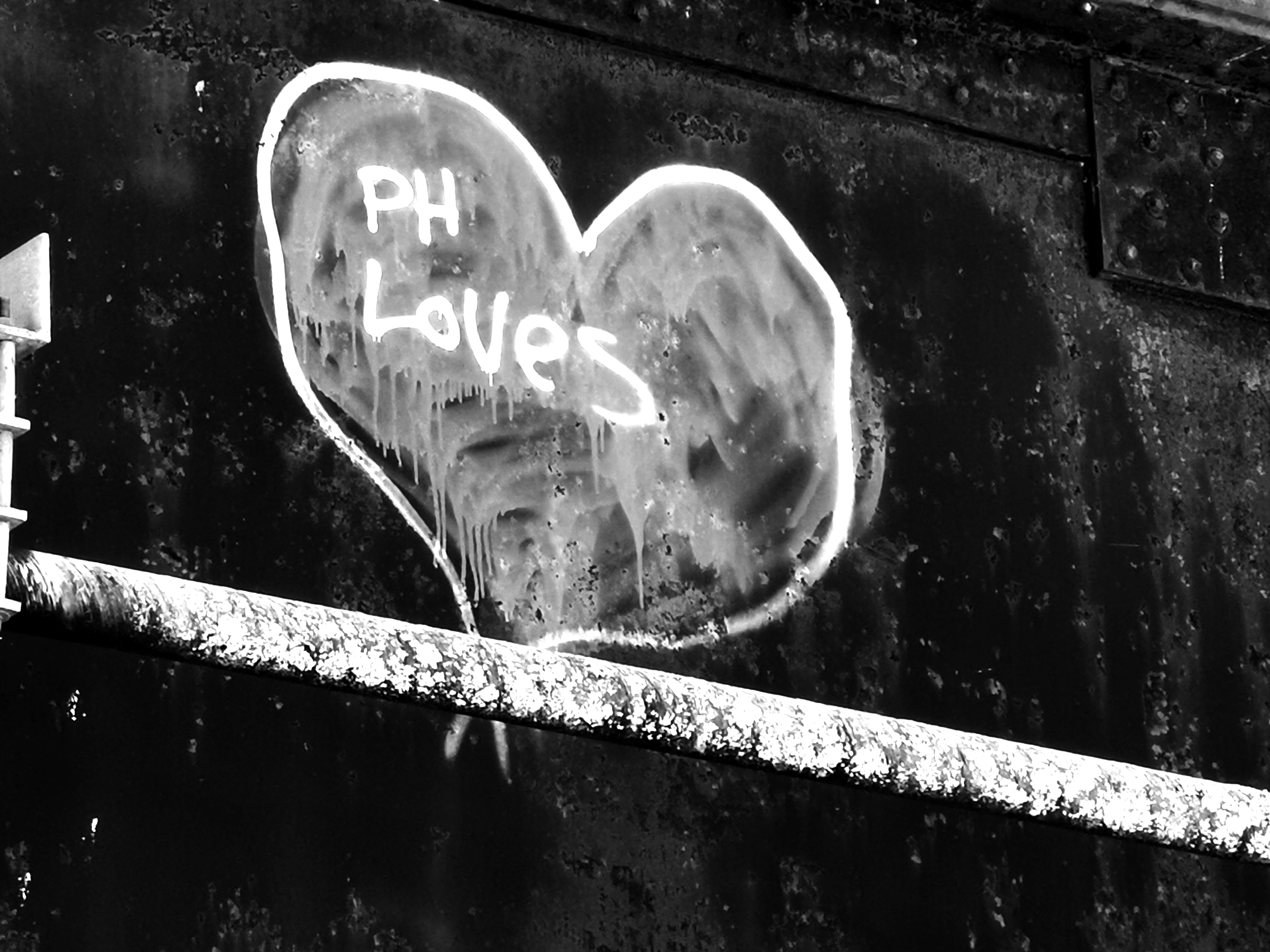
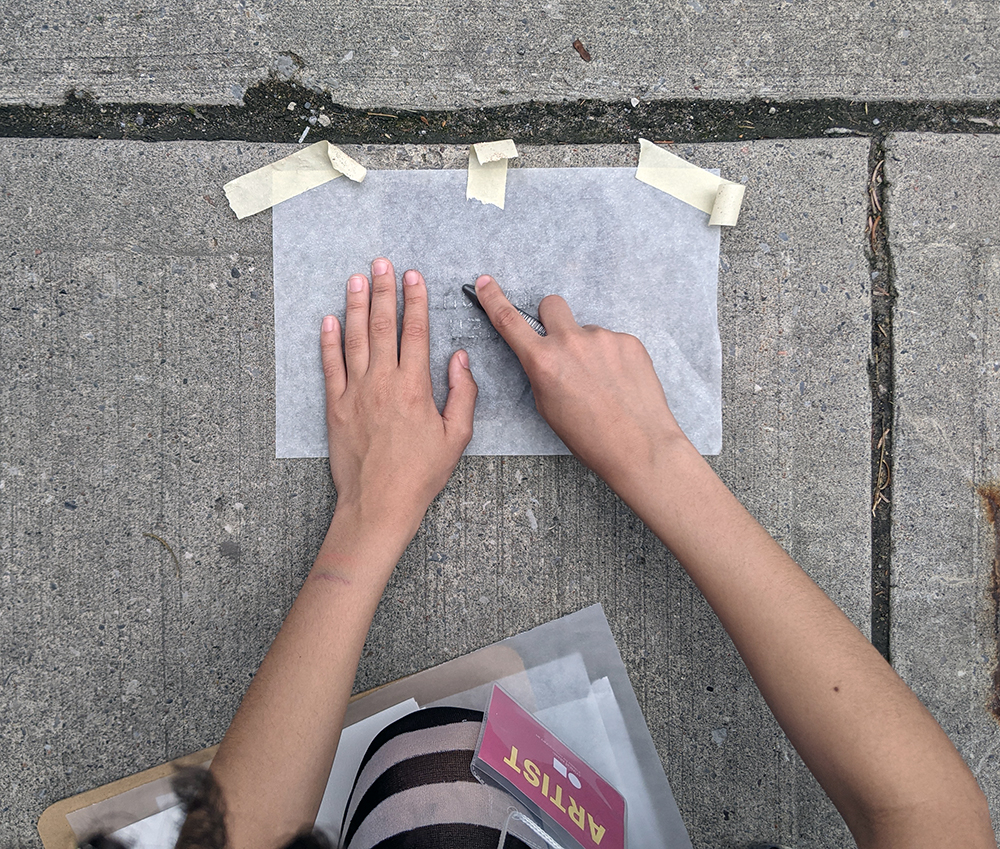

Tower of Babel
As a collaborative installation, The Palimpsest of Faded Texts became the catalyst for a discussion about how we each interpret signs and symbols differently, depending on our individual backgrounds and the biases we bring to the conversation. As we selected signs and symbols, and the palimpsest grew from the ground up, we found ourselves exchanging ideas about the many different possible interpretations: Where was the inscription found? Who was it written for? Was it directed at a small or large audience? What’s the underlying tone in the message? The process of making the palimpsest felt quite democratic, in that no one person controlled whose voice counted more than the others. This started a conversation about social hierarchies and who gets to use “text space” in the town, and which communities get to express themselves, while others remain generally inconspicuous.
We were quite excited by the fountain’s architectural form and its comparison perhaps to the Tower of Babel, especially given that the palimpsest of found letterforms, inscriptions, and messages covers its surface. Like the Tower of Babel, our palimpsest is a monument to how humans communicate with one another through languages, sometimes using verbal rhetoric, cultural symbols, and icons to navigate beliefs and values which define their immediate environment and differing world views.
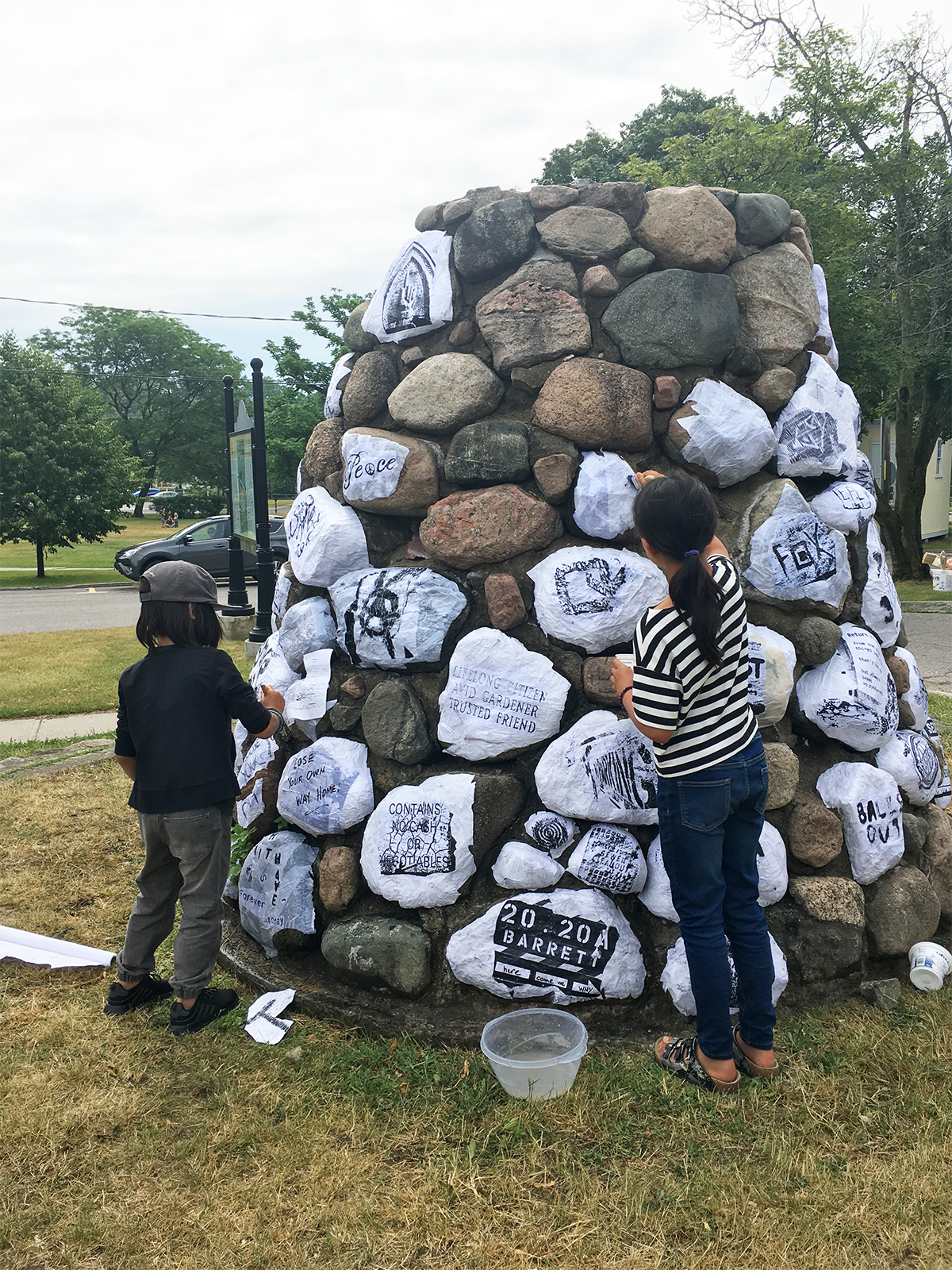

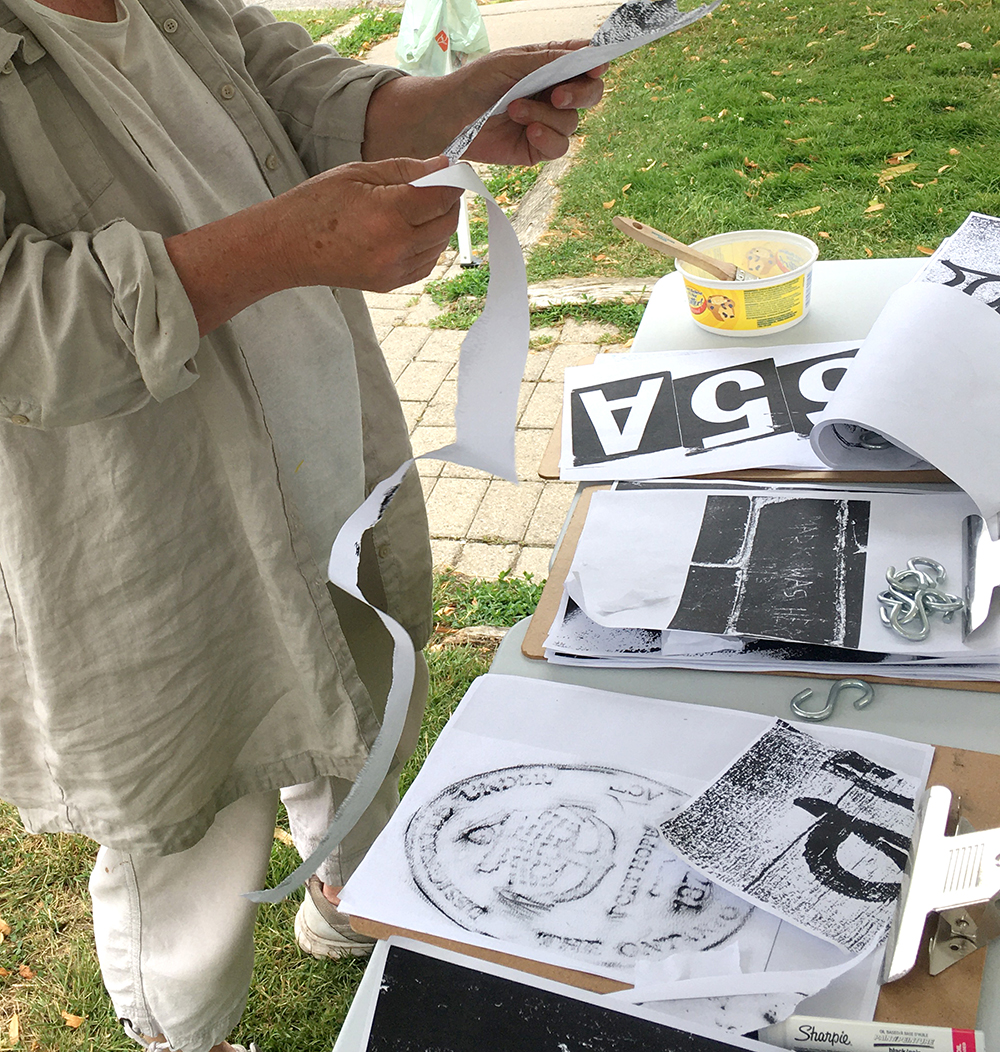


World-making and social practices (what’s our place in this world?)
The residency experience reinvigorated my analysis of the intrinsic relationship between social practices and social spaces. For example, we began noticing liminal spaces which provided an outlet for individuals to inscribe questions or statements about their identity and their place in this world, public spaces that ordinarily, they would not have. Perhaps these can be understood as unscripted moments, which seek out thresholds where it’s safe to talk back to the world, and to amplify your voice through your personal inscription.
The experience proved to me that by retrieving an undercurrent of alienated voices that are generally inconspicuous, we can perhaps begin to imagine a more tolerant environment where openly political dialogue and diverse voices can co-exist.
The generous support offered by Critical Mass, particularly the discussions I had with my Artist Buddy, Fiona, made me feel comfortable to ask questions and seek feedback. For example, at one point during the residency, we were aware that we needed to identify a site for the collaborative installation. We had a couple of ideas about possible sites adjacent to the Little Station, and considered the technical/political challenges associated with each. That’s when Fiona pointed to the fountain, and the more we talked about it, the more sense it made. This moment meant a lot to me because it demonstrated Critical Mass’s commitment to contemporary art and how it liberates social spaces for the engagement of social practices.
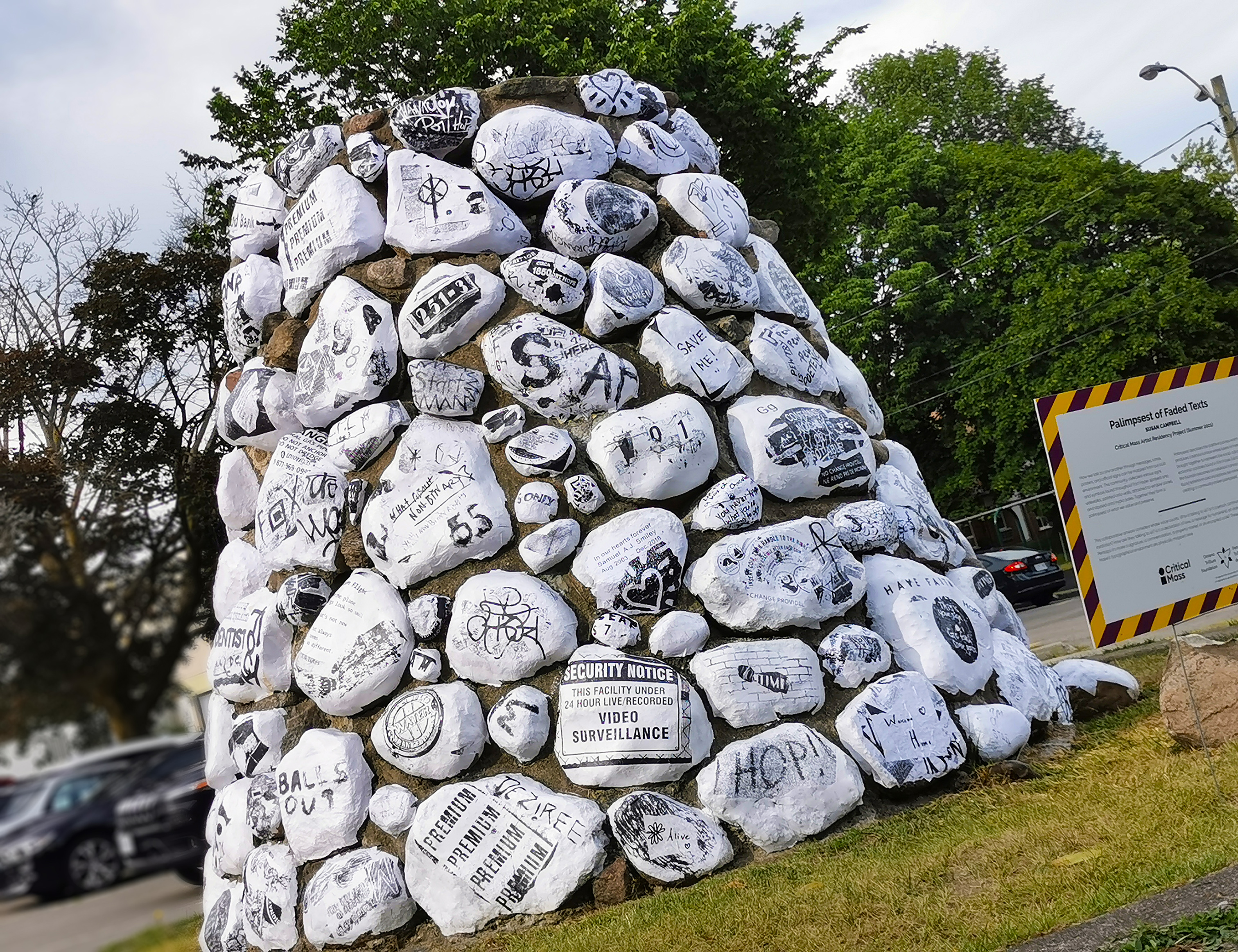



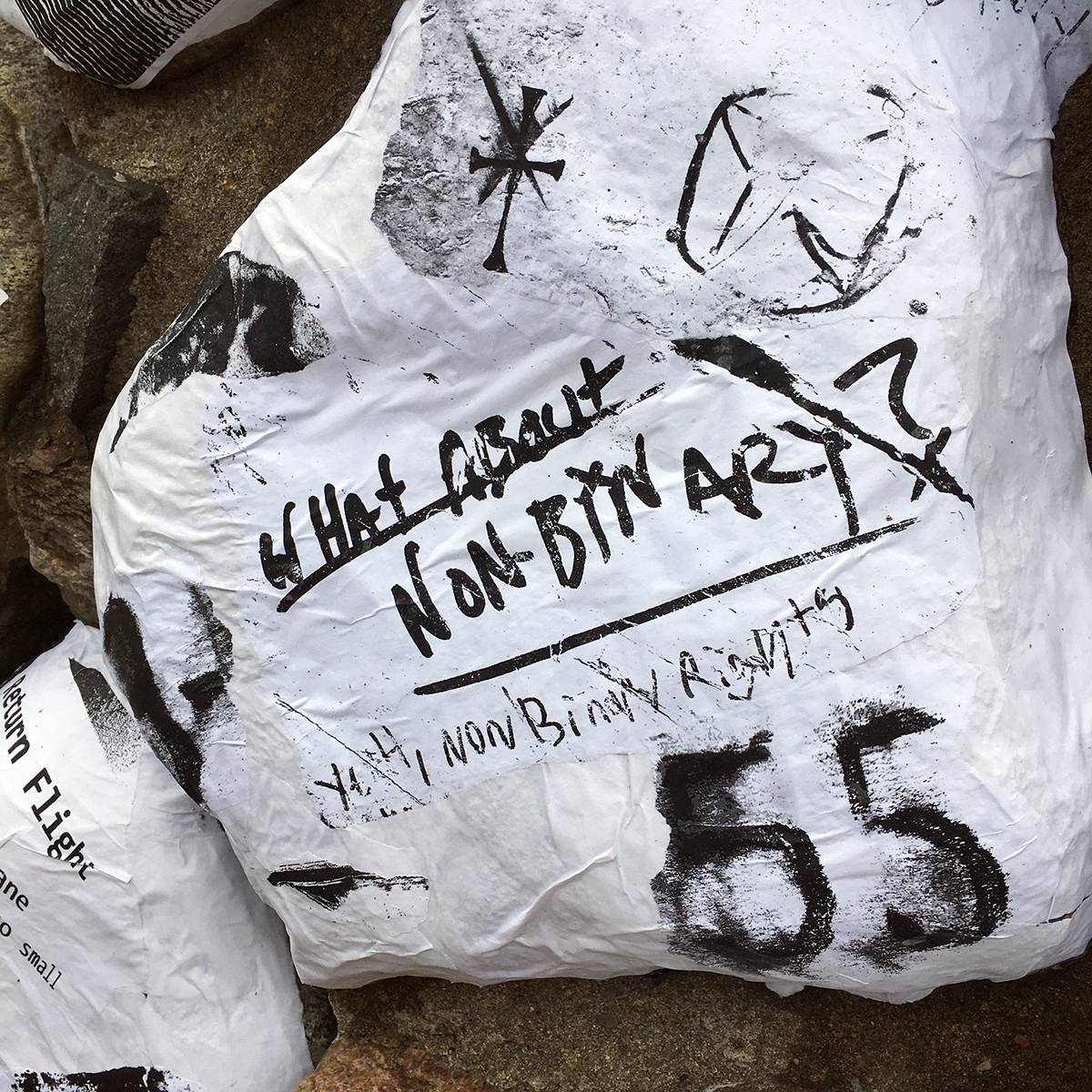
Looking back at the residency experience
I valued the amazing commitment of Port Hope (and Cobourg!) residents and artists who turned out to participate, giving their time to the project in between professional commitments, lending technical help and artistic support all throughout. Throughout the experience I made some really good friends.
I appreciated Critical Mass’s flexibility afforded in relation to rescheduling various commitments during the residency. This gave me uninterrupted time to focus on writing design briefs, proposals, and didactic panels, as well as time to edit further submissions from the community. I also had time to follow-up on previous submissions which needed to be re-photographed.
I appreciated the regular visits and check-ins by Fiona, my Artist Buddy, and Debbie, the Program Director. Fiona was the best buddy I could hope for, offering helpful appraisal and feedback whenever needed. Debbie was extremely supportive in terms of securing materials/tools in advance and preparing for each and every event/activity.
One of the most enjoyable aspects of the residency was the face-to-face conversations (with socially distancing) with my CM colleagues, Debbie and Fiona, who were particularly instrumental in helping to shape the project proposal that went to Port Hope’s Parks and Recreation. I valued their time and energy, especially how quickly Debbie secured Park & Rec’s positive response – that was one of the highlights for me!
Map-making practices with Susan Campbell, Artist in Residence, June 2021
Walk+Draw Workshop, Saturday, June 4
Walk+Draw Workshop, Saturday, June 12
Artist Talk, Thursday, June 24
Wheatpasting Workshop, Friday, June 25
Wheatpasting Workshop, Saturday, June 26
Drop-in Studio Hours:
Visit the Little Station, Lent Lane, Port Hope
Tuesday – Friday 12:00pm – 2:00pm
Funding for this residency was provided by:

